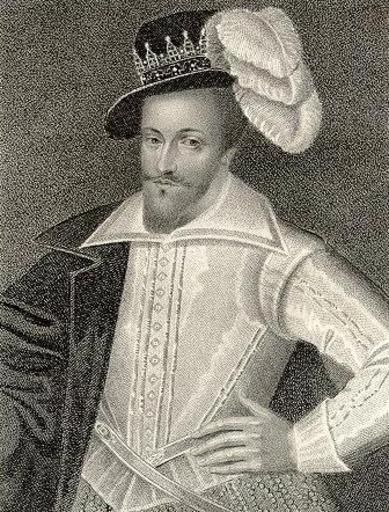MAKE A MEME
View Large Image

| View Original: | Henry_Somerset,_1st_Marquess_of_Worcester.jpg (336x442) | |||
| Download: | Original | Medium | Small | Thumb |
| Courtesy of: | www.flickr.com | More Like This | ||
| Keywords: people Henry Somerset, 1st Marquess of Worcester (bef. 1590 – 18 December 1646) was an English aristocrat, inheriting the title Earl of Worcester from his father Edward Somerset, 4th Earl of Worcester, in 1628. He was a prominent and financially important royalist. Brought up a Protestant, he converted to Catholicism as a young man. He was considered an outstandingly wealthy peer, with an income, by the contemporary estimate of Richard Symonds, of £24,000. By good management, as well as by inheritance and marriage, he built up major holdings in property. When war came, he claimed to have expended and lent £900,000 to the royalist cause.[1] Charles I asked him to keep a low profile in public life. Some noted recusants, such as Gwilym Puw and his chaplain Thomas Bayly, gathered around him at Raglan Castle. His local support was increased by the fact that he was not identified as a courtier.[2] For his financial support of King Charles I at the outset of the First English Civil War, he was created 1st Marquess of Worcester, on 2 November, 1642. After the battle of Naseby, King Charles sought refuge at Raglan, in the period June to September 1645.[3] The next year, the Marquess was forced to surrender Raglan Castle to the forces of Sir Thomas Morgan, 1st Baronet, late in 1646, marking the effective end of the Civil War in Wales.[4] He was taken into custody by the Parliamentary forces, and died in Covent Garden, on 18 December, 1646.. He was the son of Edward Somerset, 4th Earl of Worcester and Elizabeth Hastings. On 3 March, 1628, he succeeded his father and became the 5th Earl of Worcester. He married Anne Russell, a granddaughter of Francis Russell, 2nd Earl of Bedford, on 16 June, 1600.[5] With his wife, he had nine sons and four daughters including, Edward Somerset, 2nd Marquess of Worcester, his heir and successor, and Sir John Somerset, who married Hon. Mary Arundell, a daughter of the 1st Baron Arundell of Wardour, co. Wiltshire by his second wife. Henry Somerset, 1st Marquess of Worcester (bef. 1590 – 18 December 1646) was an English aristocrat, inheriting the title Earl of Worcester from his father Edward Somerset, 4th Earl of Worcester, in 1628. He was a prominent and financially important royalist. Brought up a Protestant, he converted to Catholicism as a young man. He was considered an outstandingly wealthy peer, with an income, by the contemporary estimate of Richard Symonds, of £24,000. By good management, as well as by inheritance and marriage, he built up major holdings in property. When war came, he claimed to have expended and lent £900,000 to the royalist cause.[1] Charles I asked him to keep a low profile in public life. Some noted recusants, such as Gwilym Puw and his chaplain Thomas Bayly, gathered around him at Raglan Castle. His local support was increased by the fact that he was not identified as a courtier.[2] For his financial support of King Charles I at the outset of the First English Civil War, he was created 1st Marquess of Worcester, on 2 November, 1642. After the battle of Naseby, King Charles sought refuge at Raglan, in the period June to September 1645.[3] The next year, the Marquess was forced to surrender Raglan Castle to the forces of Sir Thomas Morgan, 1st Baronet, late in 1646, marking the effective end of the Civil War in Wales.[4] He was taken into custody by the Parliamentary forces, and died in Covent Garden, on 18 December, 1646.. He was the son of Edward Somerset, 4th Earl of Worcester and Elizabeth Hastings. On 3 March, 1628, he succeeded his father and became the 5th Earl of Worcester. He married Anne Russell, a granddaughter of Francis Russell, 2nd Earl of Bedford, on 16 June, 1600.[5] With his wife, he had nine sons and four daughters including, Edward Somerset, 2nd Marquess of Worcester, his heir and successor, and Sir John Somerset, who married Hon. Mary Arundell, a daughter of the 1st Baron Arundell of Wardour, co. Wiltshire by his second wife. | ||||